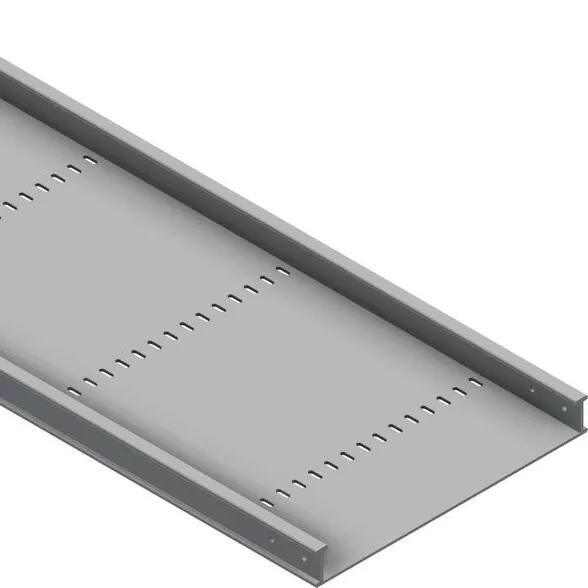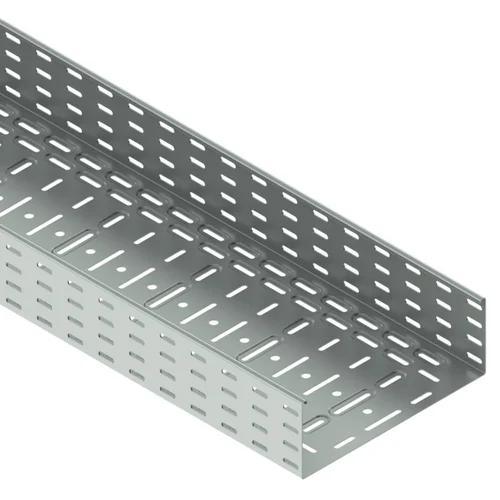Perforated cable tray systems have become an increasingly popular choice for managing and organizing cables in various industrial, commercial, and residential settings. These systems offer numerous benefits over traditional cable management methods, making them an ideal solution for ensuring the safety, efficiency, and longevity of electrical systems. In this extensive article, we will delve deeper into the key advantages of using perforated cable tray systems.
Enhanced Cable Organization and Protection
One of the primary advantages of perforated cable tray systems is their ability to provide exceptional cable organization and protection. The open design of these trays allows for easy routing and positioning of cables, preventing tangling, kinking, and damage caused by excessive bending or stretching. This not only ensures that cables remain organized but also minimizes the risk of electrical failures due to physical damage.
The perforations in the trays play a crucial role in maintaining optimal cable conditions. They facilitate ventilation and heat dissipation, reducing the risk of overheating, which can lead to premature cable degradation and potential fire hazards. Furthermore, the raised structure of perforated cable trays keeps cables off the ground and away from moisture, dust, and other environmental factors that can negatively impact their performance and lifespan.
To further enhance cable protection, perforated cable trays can be equipped with accessories such as cable ties, separators, and support brackets. These accessories help maintain proper spacing between cables, prevent abrasion, and ensure that cables are securely fastened within the tray.

Flexibility and Adaptability
Perforated cable tray systems are highly flexible and adaptable, making them suitable for a wide range of applications and environments. They can be easily customized to fit the specific needs of a project, with options for different sizes, shapes, materials, and finishes. This versatility enables engineers and installers to tailor the cable tray system to the unique requirements of each installation.
Moreover, perforated cable trays can be installed in various configurations, including straight runs, curves, bends, and branches. This flexibility allows for seamless integration with existing infrastructure and future expansion, ensuring that the cable management system can accommodate changes in cable layouts, additions of new cables, or removal of unused cables without causing disruptions to the entire system.
In addition, perforated cable trays can be designed with multiple levels or tiers, enabling efficient segregation of power, data, and communication cables. This feature helps minimize electromagnetic interference (EMI) and improves signal integrity, particularly in mission-critical applications such as data centers and control rooms.
Cost-Effectiveness
Perforated cable tray systems offer cost-effective solutions for cable management compared to alternative methods such as conduit or raceway systems. The open design of these trays reduces material costs and installation time, as they require fewer components and labor hours to install. Additionally, the simplicity of the design makes it easier for installers to work with, further contributing to cost savings.
Furthermore, the durability and low maintenance requirements of perforated cable trays translate into long-term cost savings. Their robust construction and corrosion-resistant materials ensure that they are less likely to fail or require frequent repairs or replacements. This makes them a wise investment for businesses and organizations looking to optimize their cable management budgets while maintaining high levels of performance and reliability.
Improved Safety and Compliance
Perforated cable tray systems contribute significantly to improved safety and compliance with electrical codes and regulations. By providing a structured and organized pathway for cables, these trays reduce the risk of accidents, injuries, and electrical fires caused by loose or exposed wiring. The raised design also minimizes trip hazards, creating a safer working environment for personnel.
In addition, perforated cable trays can be designed with additional safety features such as covers, ladders, and support brackets. These features enhance worker safety during installation, maintenance, and repair operations by providing secure footing and access points. They also facilitate inspection and testing of cables, ensuring that they meet industry standards and comply with regulatory requirements.
Aesthetics and Space Optimization
Perforated cable tray systems offer aesthetic benefits and space optimization advantages over other cable management methods. The open design of these trays creates a clean and uncluttered appearance, which can enhance the visual appeal of a workspace or facility. This is particularly important in modern office environments, where aesthetics play a crucial role in creating a professional and inviting atmosphere.
Moreover, perforated cable trays can be installed overhead or underfloor, freeing up valuable floor space and reducing trip hazards associated with traditional cable management methods. This space-saving feature is especially beneficial in confined spaces, such as data centers, server rooms, and industrial facilities, where efficient use of available space is critical.
Ease of Installation and Maintenance
Perforated cable tray systems are relatively easy to install and maintain compared to other cable management methods. Their modular design allows for quick assembly and disassembly, enabling installers to complete projects more efficiently. Additionally, the open structure facilitates easy access to cables for maintenance, repairs, or upgrades, reducing downtime and minimizing disruption to operational activities.
Installation processes can be further streamlined through the use of prefabricated sections, preassembled components, and specialized tools and equipment. This not only speeds up the installation process but also ensures that the cable tray system is installed correctly and safely.

Sustainability and Environmental Considerations
Perforated cable tray systems also offer sustainability and environmental advantages. Many manufacturers produce trays made from recycled or environmentally friendly materials, such as aluminum or galvanized steel, which have a lower carbon footprint compared to traditional materials like PVC or concrete.
Furthermore, the durability and longevity of perforated cable trays reduce the need for frequent replacements, minimizing waste generation and resource consumption. When properly maintained, these systems can last for decades, contributing to a more sustainable and eco-friendly approach to cable management.
Conclusion
In conclusion, perforated cable tray systems offer numerous advantages over traditional cable management methods, including enhanced cable organization and protection, flexibility and adaptability, cost-effectiveness, improved safety and compliance, aesthetics and space optimization, ease of installation and maintenance, and sustainability and environmental considerations. By investing in these systems, businesses and organizations can achieve optimal cable management outcomes while minimizing risks, costs, and downtime. Whether used in industrial, commercial, or residential settings, perforated cable tray systems are a reliable and efficient solution for managing and organizing cables, ensuring the safe and efficient operation of electrical systems. As technology continues to evolve and electrical systems become more complex, the importance of effective cable management cannot be overstated, making perforated cable tray systems an indispensable component in modern infrastructure.

